Fresh Cut Christmas Trees Now Available in the Nursery
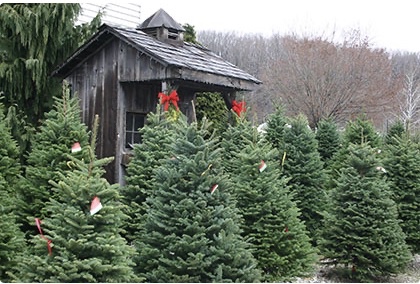
Voted Best of Baltimore 2022 Nursery & Garden Center

On the first day of Christmas my true love gave to me……statuary! Looking for something a little different to give as a Christmas gift? We think a piece of garden statuary might be the answer. Rustic in appearance and made of cast cement the pieces in this collection will add a bit of whimsy and fun to your garden. We have a nice selection to choose from so come take a look. Open 9 – 5 everyday!
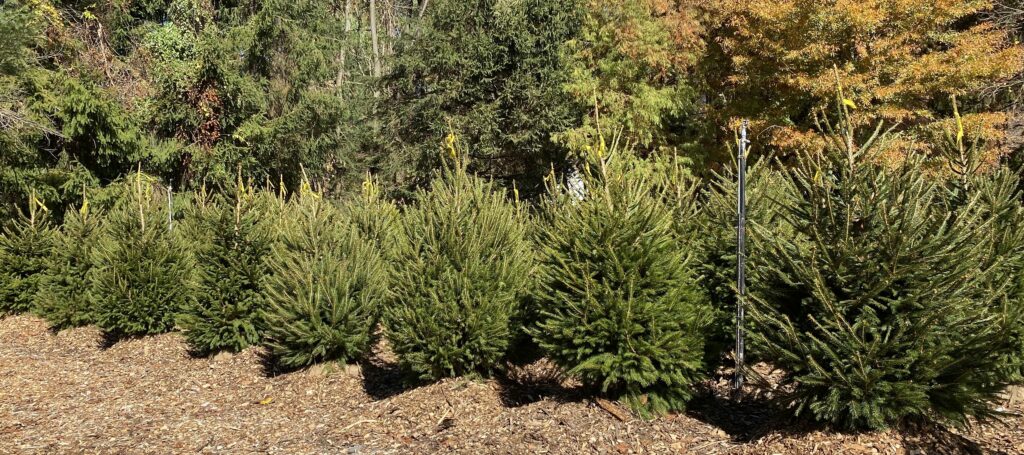
You may have seen this around your garden and home and thought “eeewwww”, what is that ugly thing? That, my dear, is a wheel bug and not to be feared unless they bite you. They are a generalist predator and love to feast on the dreaded spotted lantern fly, which is a good thing! Often known as assassin bugs they sport a dagger-like, piercing-sucking beak. They feast on something small like an aphid right up to something the size of a caterpillars. The wheel bug can reach up to 1 1/2 inches in length but don’t mess with them because if they bite you they can pack quite a punch. Avoid using broad-spectrum pesticides because this is one bug you want in your garden. We’ve posted photos of wheel bug eggs compared to the eggs of the spotted lantern fly so you can identify the one to seek out and destroy. Photos courtesy of U. of Md. Entomology Dept.
They’re back! Paperwhite and Amaryllis bulbs are in. Great gift item if you have a “non-gardener” ![]() (is there such a thing?) in your life. Add a pretty container and voila’, you have a gift that won’t break the bank. Enjoy the beauty of the Amaryllis, 3 to 4 stems with 4 to 6 blooms on each, and with proper care they should be repeat bloomers. The Kingsdene elves have been VERY busy so come on in and see what those little rascals have been up to.
(is there such a thing?) in your life. Add a pretty container and voila’, you have a gift that won’t break the bank. Enjoy the beauty of the Amaryllis, 3 to 4 stems with 4 to 6 blooms on each, and with proper care they should be repeat bloomers. The Kingsdene elves have been VERY busy so come on in and see what those little rascals have been up to.
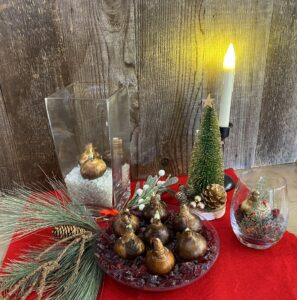

Isn’t this pretty? Leaves changing on one of the Flame Thrower Redbuds (Cercis canadensis) in the nursery. Native, with light pink spring flowers with an ever-changing display of colorful foliage that continues all the way to fall. New foliage emerges burgundy, fades to yellow, and matures to green. A fantastic and stunning landscape specimen. Deciduous, likes full to part sun, generally matures at 10 years with a spread of 15 feet and a height of 15 to 20 feet.
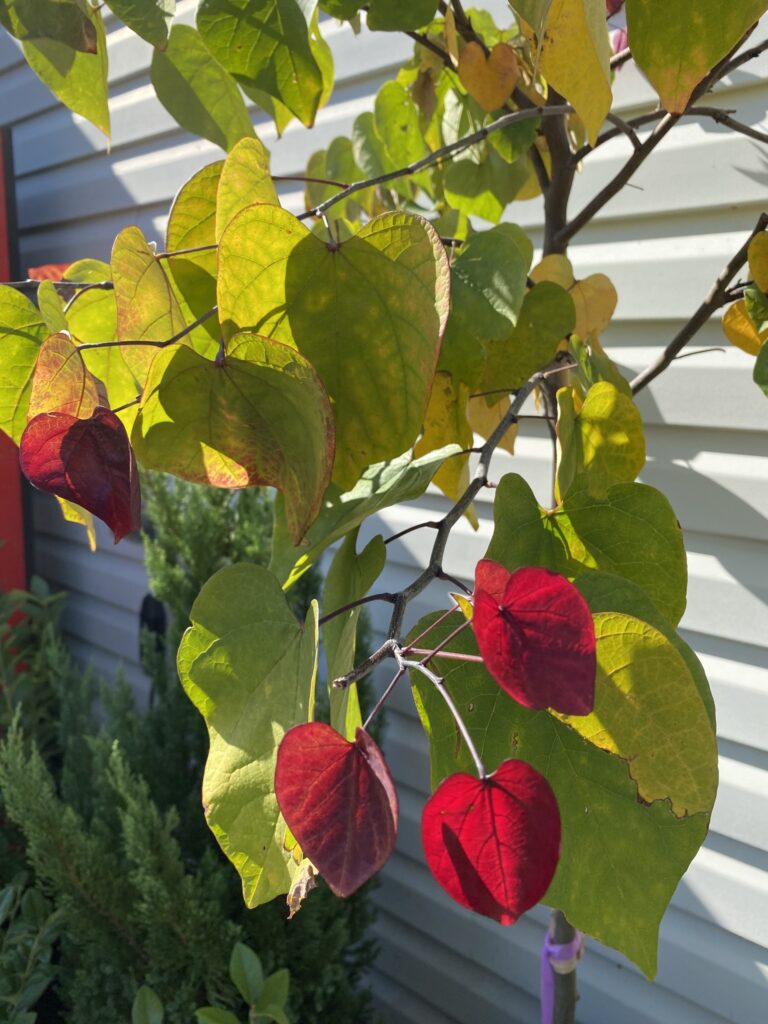
Our Winterberry, Ilex Verticillata ”Red Sprite” is just stunning this year. Loaded with a profusion of bright red berries, this hardy deciduous shrub will definitely add a pop to the winter landscape and provide food for overwintering birds. Best part, it’s native! ![]() Use as foundation color, for a natural hedge, or in a shrub border for seasonal interest. An early-flowering male pollenizer such as Jim Dandy Winterberry is required for berry set. Both Red Sprite and Jim Dandy available in the nursery.
Use as foundation color, for a natural hedge, or in a shrub border for seasonal interest. An early-flowering male pollenizer such as Jim Dandy Winterberry is required for berry set. Both Red Sprite and Jim Dandy available in the nursery.
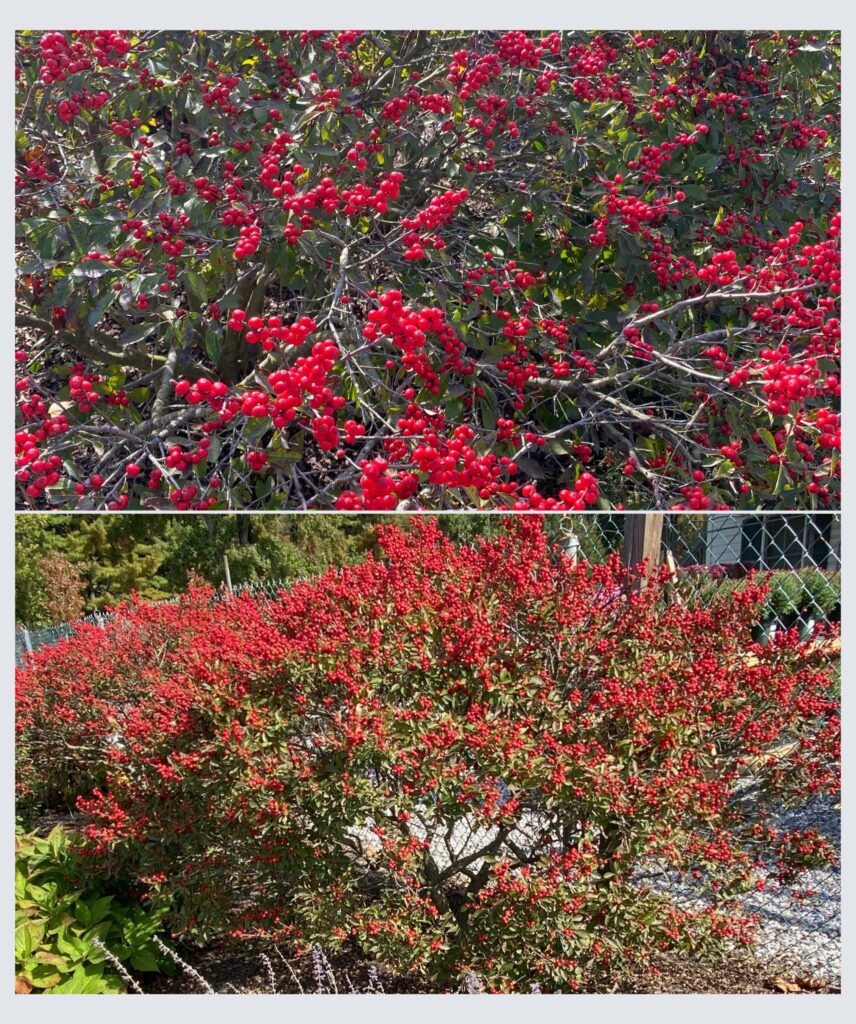
Little Henry, how do I love thee? Let me count the ways. Meet Little Henry Sweetspire, Itea virginica. No muss or fuss with this one. Native to North America and pollinator friendly. Little Henry is a useful plant with lots of potential for your landscape. It prefers moist soils and will tolerate wet conditions. It will grow in full sun to full shade, and requires little pruning or other maintenance. Little Henry has lightly scented, pure white flowers that shoot like fireworks in the early summer. Looks great in a mixed border. Attracts butterflies and bees. Generally deer resistant. Grows 24 to 36″ in height and width, with a mounding habit. Just when you’re not expecting anything more, green summer foliage changes to a brilliant multitude of oranges and reds in the fall, making Little Henry a real stand-out. Available in 3 gallon containers in the nursery.
